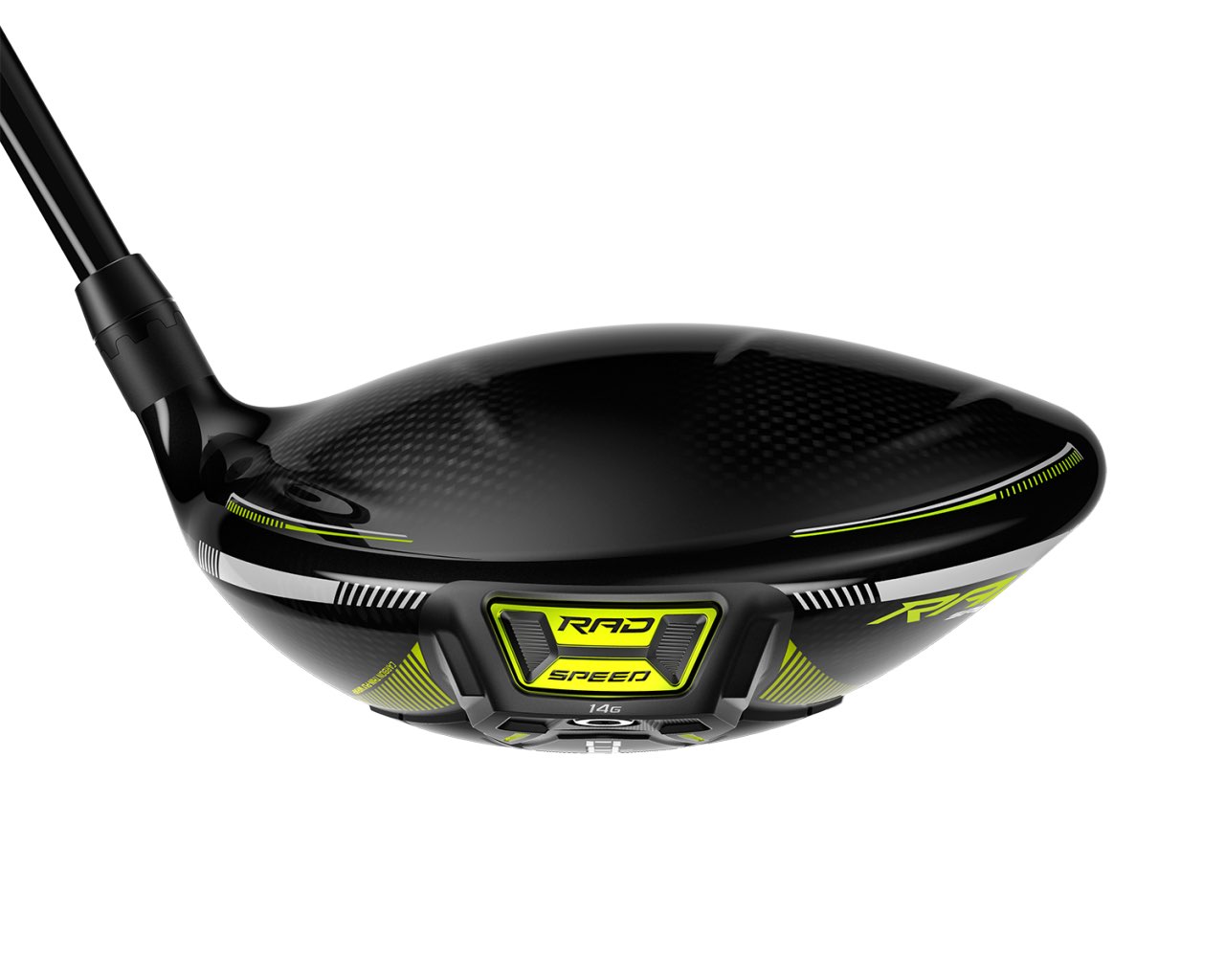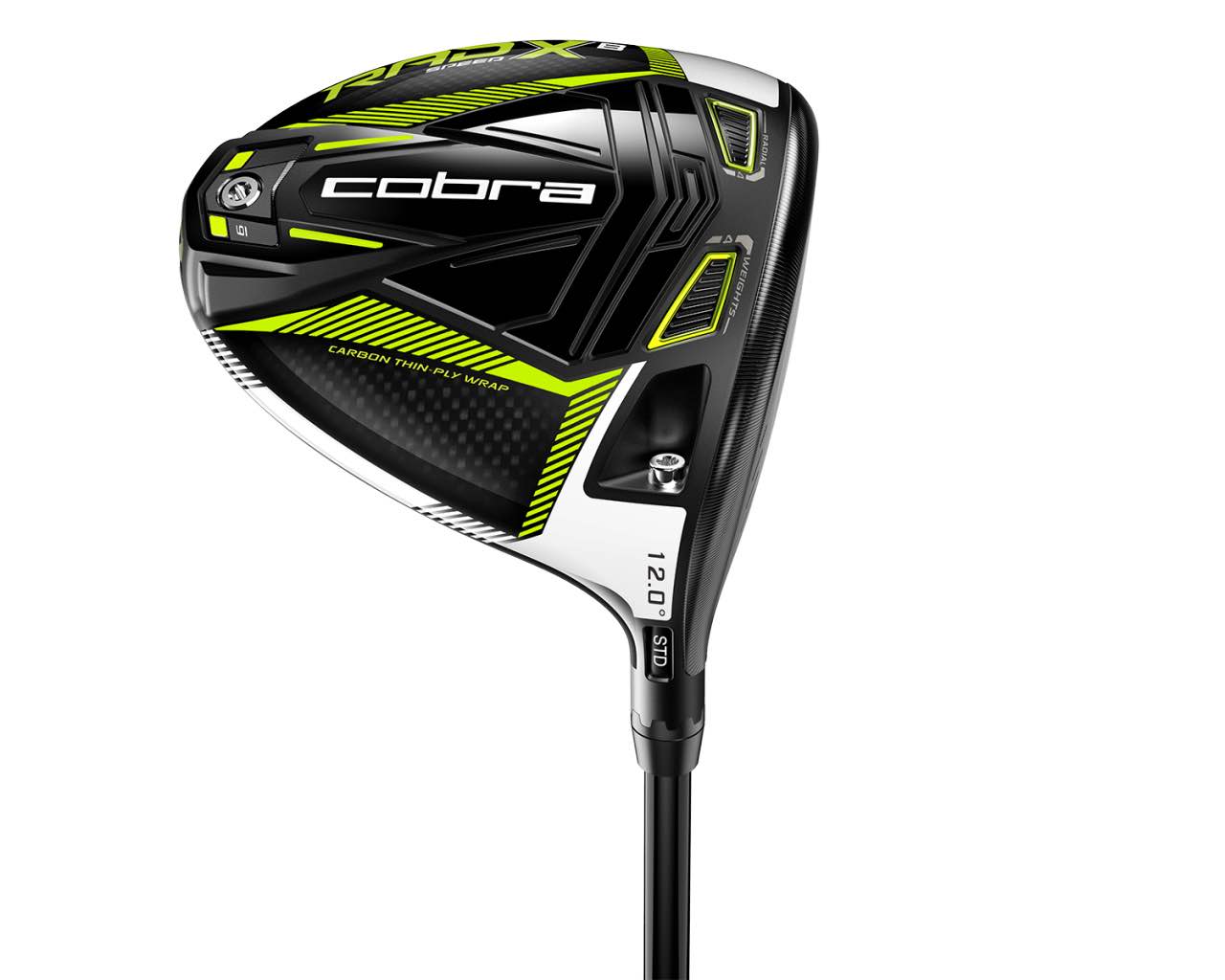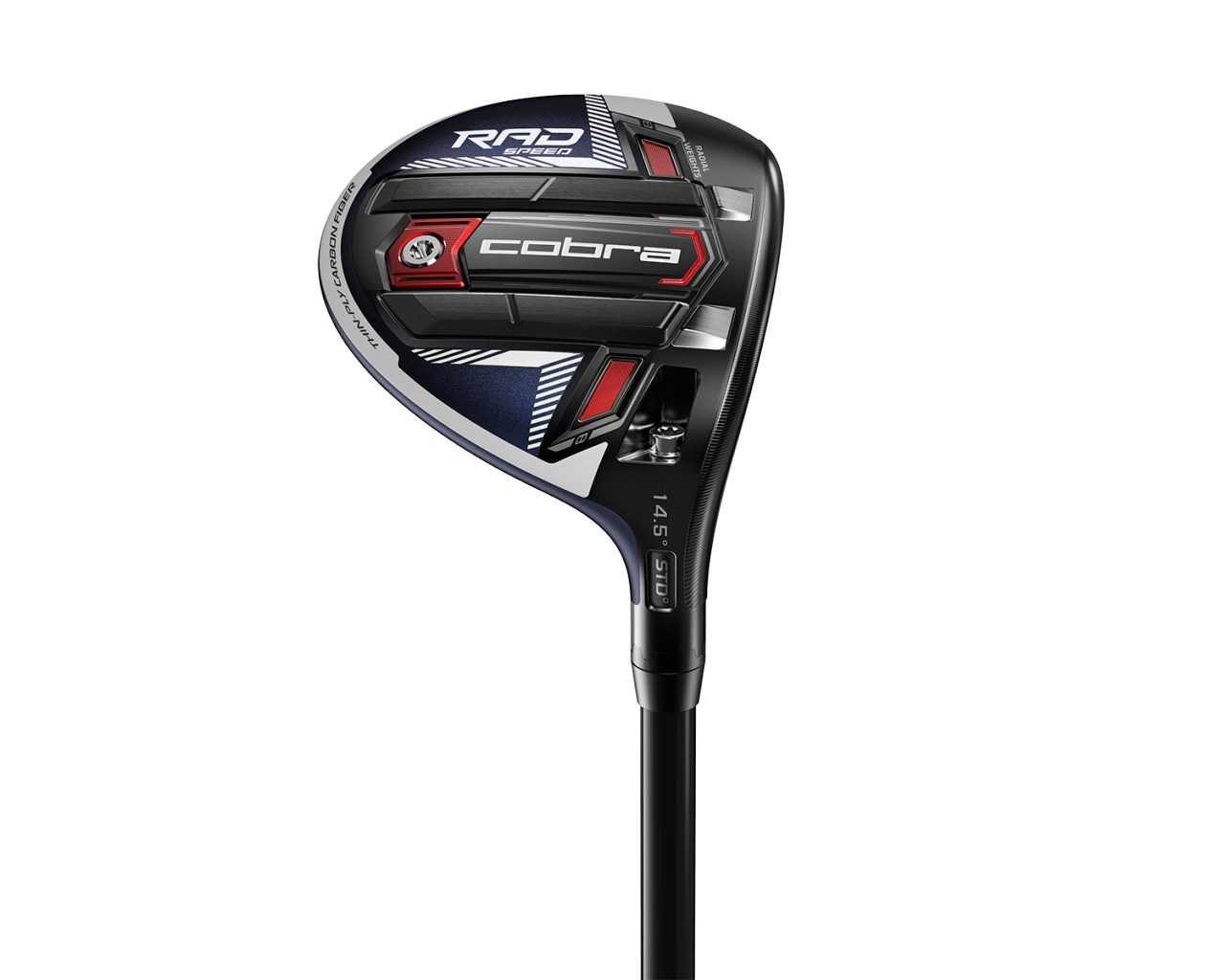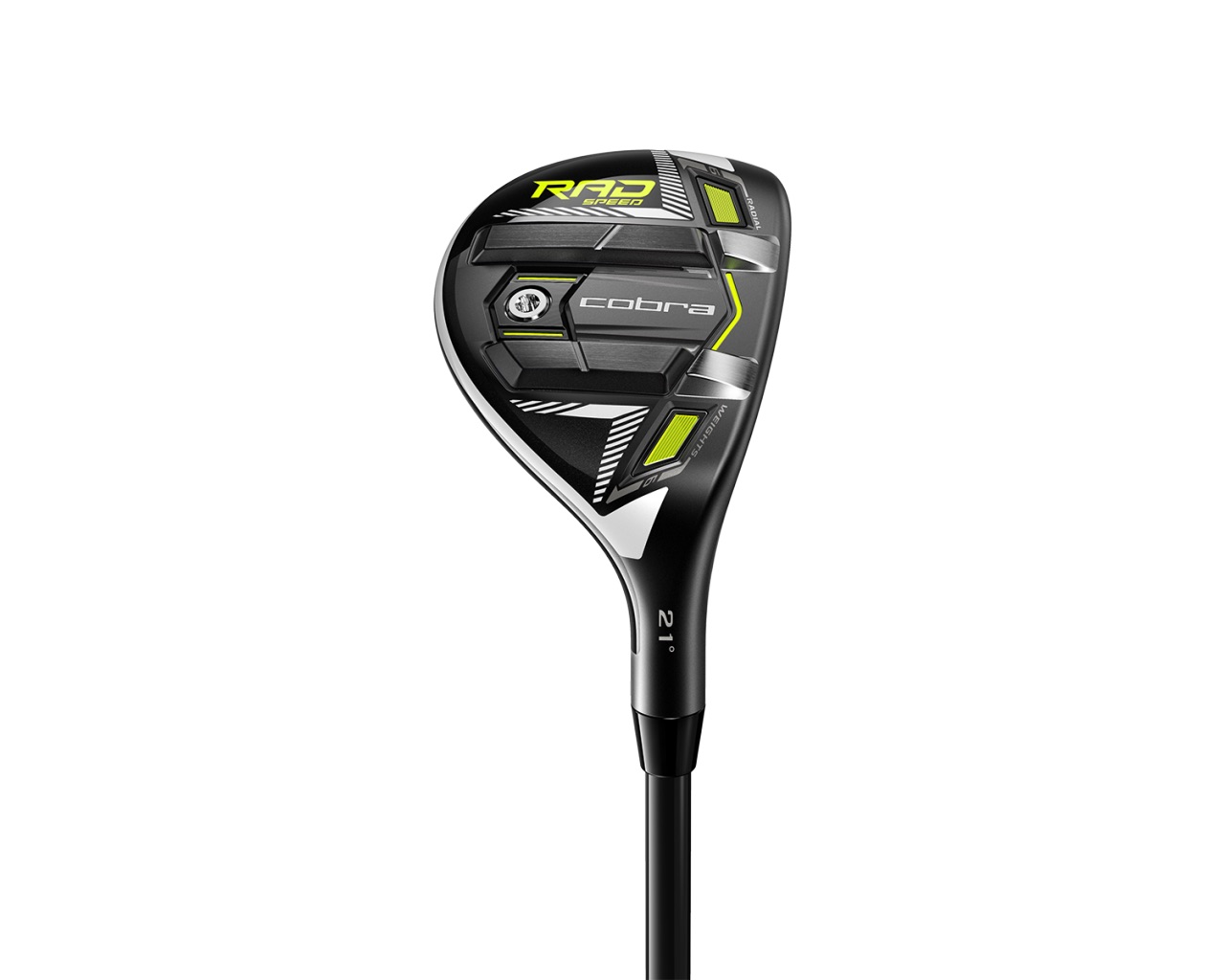WHAT YOU NEED TO KNOW: Cobra’s Radspeed metalwood lineup includes three driver options, four fairway wood options and two hybrid versions. Each distinctly different head explores the benefits of pushing saved mass to extreme locations: Forward to optimise energy transfer and lower spin for better players; rearward to improve off-centre hit forgiveness for average golfers; and toward the heel to add draw bias for slicers.
THE DEEP DIVE: The idea that different players – elite golfers, average hacks, slicers – might require different kinds of drivers is not a new concept. What’s different about the new Cobra Radspeed drivers, as well as the company’s full complement of fairway woods and hybrids, is how those different drivers for different players might best come about.
It’s a concept in physics called radius of gyration (hence the “Rad” in Radspeed), and in simplest terms it has to do with distributing varying amounts of weight at the extremes from the club’s centre of gravity.
Cobra’s Radspeed drivers save mass through a new carbon fibre construction and streamlined body shaping, and that discretionary mass is redistributed in three different ways. The Radspeed offers a more balanced front and back distribution of weighting between the front and rear for better players looking for lower spin. The Radspeed XB features a longer front to back shaping and more weight moved to the rear of the head to provide stability on off-centre hits. Finally, the Radspeed XD concentrates some extra mass towards the heel side of the head to promote a draw or mitigate a slice.

It is the subtle differences in how that discretionary mass is balanced in the head that determines those three different answers to three different players. It’s not simply that each of the three drivers takes all the weight that’s been freed up and pushes it all in one direction (forward, back or in the heel). Rather it’s how concentrated weight pads are pushed in distinct directions in each of the three models. The weight is forward and back in the Radspeed and the Radspeed XB; while it is forward, back and toward the heel in the Radspeed XD.
“There is no universal golfer except in maybe what you see in a video game,” said Tom Olsavsky, Cobra’s vice president of research and development. He says he’s seen studies showing there might be 18 different types of golfers and swings. “It’s why you see all these options of clubs. We’ve done a good job of understanding what golfers want and that’s why you see these three models here.
“But to make them the most effective the goal is to get that mass as far apart as possible within the structure of the head.”
The key is the weight-saving structure seen first in last year’s Speedzone drivers and refined this year. That design features a central strip of titanium in the T-shaped frame that’s surrounded by carbon fibre panels that wrap around the crown, skirt and sole and now cover half of the surface area of the driver’s body. The new thinner ply carbon fibre in the Radspeed drivers is just 0.6 millimetres thick or nearly 30 percent thinner than a year ago. Combined with shaping and thickness tweaks to the body and computer milled face, the three Radspeed drivers have between 28 and 38 grams of discretionary mass to redistribute within the head.

While each concentrates some additional mass forward to enhance ball speed, that mass is balanced distinctly for each model. Of the Radspeed XB’s 28 grams, 20 are concentrated in the rear centre of the head for a driver with the highest moment of inertia (MOI) or forgiveness on off-centre hits of the three models (well north of 5,000 grams-centimetres squared). On the draw-biased Radspeed XD, 24 of the 32 grams are slugged in the heel and back of the driver.
Finally, the standard Radspeed features switchable front and rear 12- and 2-gram weight chips. With the heavy weight in front, more than 70 percent of the 38 grams of discretionary mass is in extreme forward positions near the face. That provides the highest energy transfer and lowest spin for centre hits. Even with the heavier weight in the rear position, nearly half of the discretionary mass is still pushed to the front.
While the mass savings make these three drivers distinct, a key similarity between them is the company’s milled face design, a key element of last year’s Speedzone drivers. This process, which requires 25 minutes for each face, allows for the extreme precision in Cobra’s multidirectional bulge and roll curves that are designed to provide better launch conditions on shots all over the face. According to the company, the CNC-milling process is five times more accurate and consistent compared to the variability of hand polishing and finishing. In short, the process is greater assurance that what’s been designed into the face ends up in the finished product more exactly and more often.
Olsavsky says the accuracy of the process can make Cobra’s finished products perform better than a measurement like MOI might suggest. MOI really is just about how stable a head is and how little ball speed is lost after a mishit. Forgiveness, meanwhile, is where the ball ends up after a mishit, and face curvature like bulge and roll is crucial in helping mishits still optimise launch or swing back towards the centre line, he said.
“One of the things that we’ve seen in our testing is that because we are milling our faces and we have a triple bulge and dual roll and all these face geometries that we’re executing, we can get much better ball flight correction and dispersion than clubs with an even higher MOI,” he said.

The use of the radial weighting concept found in the Radspeed drivers is also an important element of the new Radspeed fairway woods and hybrids, too. It’s instrumental in creating the weight distribution in four distinct fairway wood shapes, while for the Radspeed hybrids the saved weight is concentrated towards the front of the head to further lower the centre of gravity.
The Radspeed fairway woods feature a thin-ply carbon fibre crown that, like the drivers, is 30 percent thinner than that on last year’s SZ fairway woods. The four models concentrate varying as much as 23 grams saved by the carbon composite crown towards the front or heel, depending on the head. The standard model balances that saved weight with 16 grams towards the front (two eight-gram internal weight pads in the forward heel and toe) and seven grams in back, while both the compact Radspeed Tour and Radspeed Big Tour (similar in size and shape to the standard head) push 23 grams to the front for better ball speed, a lower CG and lower spin. The Radspeed Draw fairway wood positions 16 grams towards the heel to fight the slice.
The Radspeed hybrids balance 12 grams of internal heel and toe weight pads towards the front with a seven-gram rear weight. This positioning helps lower spin and provides off-centre hit stability, as well. There’s also a Radspeed One-Length hybrid option built to a 7-iron length of 37.5 inches and designed to work with the company’s single-length iron sets.
Like the fairway woods and past Cobra metalwoods, the hybrids feature split rails on the sole to improve turf interaction. The front part of the rails is hollow to improve the way the face flexes while still providing the weighting and sole enhancement effects. Both also feature high-strength steel faces to improve face rebound for better ball speeds.

Like all Cobra clubs, the Radspeed metalwoods include Cobra Connect grip sensors that work with the Arccos Caddie system to provide statistical distance and performance data.
The Radspeed drivers and fairway woods both feature Cobra’s eight-way adjustable hosel that tweaks loft by plus or minus 1.5 degrees.
The Radspeed driver, which is offered in a matte black/turbo yellow finish or a matte peacoat blue/Arsenal red colour, is available in 9- and 10.5-degree models (gloss black/turbo yellow or matte peacoat blue/Arsenal red), the Radspeed XB in 9-, 10.5- and 12-degree models (gloss black/turbo yellow or matte peacoat blue/Arsenal red) and the Radspeed XD in 10.5- and 12-degree versions (gloss black/turbo yellow only). In the fairway woods there are eight loft options. The Radspeed and Radspeed Draw come in 14.5-, 18.5- and 22.5-degree lofts (gloss black/turbo yellow or matte peacoat blue/Arsenal red), the Radspeed Big Tour in a 13.5-degree loft and the Radspeed Tour in a 17.5-degree option (matte black/turbo yellow only). The Radspeed hybrids ($230) come in fixed hosel 17-, 19-, 21-, and 24-degree lofts (19-, 21-, and 24-degree models in One Length option).
Stay tuned for Australian pricing and availability.




